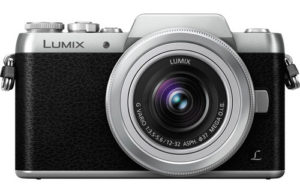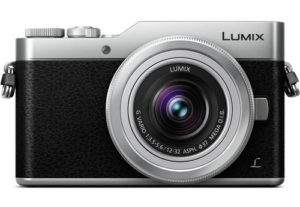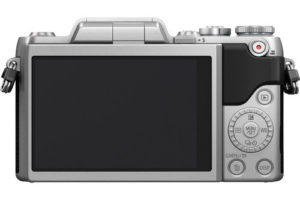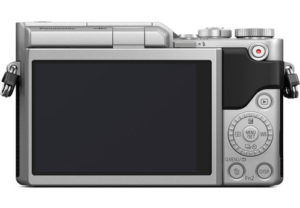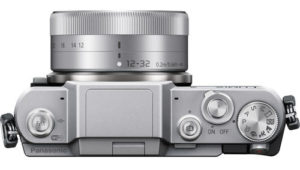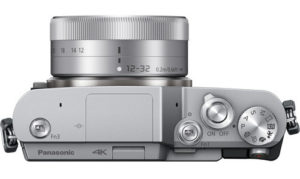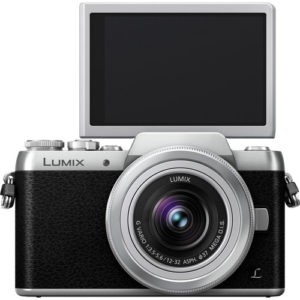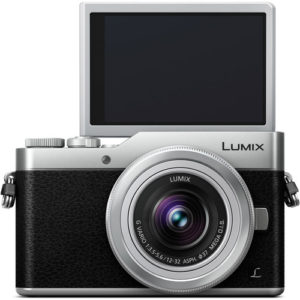Despite rumours earlier this year that Panasonic had axed the GF series, today’s announcement of the GX850 (otherwise know as the GX800 or GF9 depending on where you live) at CES in Las Vegas would suggest that the brand hasn’t given up on their entry level cameras just yet.
Of course, the announcement of any new camera always raises the question of just how much it differs from the previous model. In this comparison preview, we’re going to try to answer this question by analysing the ten main differences between the GX850 and its predecessor, the GF7, and in the process, hopefully help you to figure out which model is best for your needs!
Note: although there was a GF8, it was not released in the US or UK.
Ethics statement: The information supplied in this article is based upon the official specifications found on the Panasonic website and our personal experience with Panasonic cameras. We were not asked to write anything about these cameras, nor were we provided any compensation of any kind. Within the article, there are affiliate links. If you decided to buy something after clicking the link, we will receive a small commission. To know more about our ethics, you can visit our full disclosure page. Thank you!
1. Updated design
Now that the GF series has been integrated into the GX family, its appearance too has been modified to more closely resemble that of the GX85 and GX8. Although the dimensions are exactly the same as the GF7 it replaces – 106.5 x 64.6 x 33.3 mm to be precise – the small hump has been replaced by a more stylish flat-topped design.
While the GF7 was only available in a combination of black/silver or pink/silver, the GX850 comes in four different colour combinations: black/silver, pure black, orange/silver and brown/silver. The standard SD card slot of the GF7 has also been replaced by a Micro SD card slot on the GX850.
2. Low-pass filter
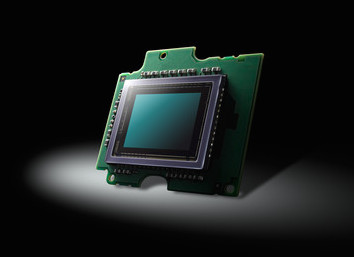
Although the two cameras house the very same 16MP Micro Four Thirds sensor, the GX850’s lacks a low-pass (a.k.a. anti-aliasing) filter, allowing for 10% more resolution in comparison to the model it replaces. The GX85 and G85 were the first cameras to lack the filter, and the GX850 has followed suit.
3. 4K video
Like all the most recent Lumix cameras, the new GX850 is capable of shooting in both 4K at up to 30fps (100Mbps) and Full HD up to 60fps (28Mbps). Being part of the older generation of Lumix cameras, the GF7 is only capable of the latter.
That said, the GF7 has a slight advantage: a longer continuous recording time of 40 minutes. With the GX850, you can shoot for up to 20 minutes in 4K or 30 minutes in Full HD.
4. 4K Photo
4K Photo first appeared on Lumix cameras a couple of years ago and has since become an established feature. In simple terms, it allows you to extract an 8MP JPG file in-camera from footage shot in 4K at 30fps. Since 30fps is much faster than the continuous shooting speeds of most cameras, it is easier to capture fleeting moments such as a child briefly smiling at you or a dog jumping in mid-air.

Because of its 4K capabilities, the GX850 naturally benefits from all the latest 4K Photo modes. These include 4K Burst, 4K Burst (Start/Stop) and 4K Pre-burst, Focus Stacking, Post Focus and Light Composition.
The GF7 is part of the generation that preceded the arrival of 4K Photo, and as such, does not have any of these features.
5. Depth from Defocus (DfD) Autofocus System
Depth from Defocus (DFD) is an autofocus system based on contrast detection and has been integrated on all mid-to-high end Lumix cameras for a couple of years. Compared to other contrast detection systems, DFD is faster and more precise.
The GX850 is the first entry-level camera to incorporate DFD. Also included is an increased number of AF points (49 up from 23) and the addition of a Custom Multi autofocus option that lets you select a cluster of points anywhere on-screen.
The options the two models share are Face/Eye Detection, Tracking, 1-Area and Pinpoint.
6. Focal plane shutter
While the GF7 has an electronically-controlled focal plane shutter, the GX850 has a single curtain focal plane shutter. Both benefit from an electronic shutter that automatically activates beyond 1/500 of a second.
Curiously, the GX850 appears to lack the SH (Super High) continuous shooting mode found on the GF7. This mode permits the camera to shoot up to 40fps with the electronic shutter in JPG mode although at a reduced resolution of 3MP.
7. Buffer capacity
The increase in buffer capacity is another advantage the GX850 has over the GF7. When shooting in RAW format, the camera can record up to 15 consecutive images, and surpasses 100 images once you switch over to JPG mode.
By contrast, the GF7 can only record up to 7 images in RAW format, though it can shoot an unlimited number in JPG mode. With SH (Super High) activated, the camera can shoot up to 39 consecutive JPGs in a burst.
8. More advanced “self shot” mode
Both the GF7 and GX850, with their 180-degree flip-up touchscreen, target avid selfie shooters, so it should come as no surprise that the self portrait modes have been further enhanced on the new model.
In addition to Single, which both cameras share, there is a Self Timer that takes 1-4 images, a 4K Selfie option, and a Panorama Selfie option. You’ll also find a new Background Control mode which lets you capture either a “clear” or “defocused” background without touching the aperture.
Additional control over the Soft Skin and Slimming modes has also been given to the GX850. Whereas with the GF7 you could only select between low, medium and high, the GX850 lets you choose between 10 different levels.
9. New L.Monochome Photo Style
On the GF7, there is a total of seven photo styles: Standard, Vivid, Natural, Monochrome, Scenery, Portrait and Custom.
The GX850 benefits from all these, as well as one additional profile called L.Monochrome. Originally introduced on the GX85 and subsequently the G85, it applies a punchier look to your black and white images.
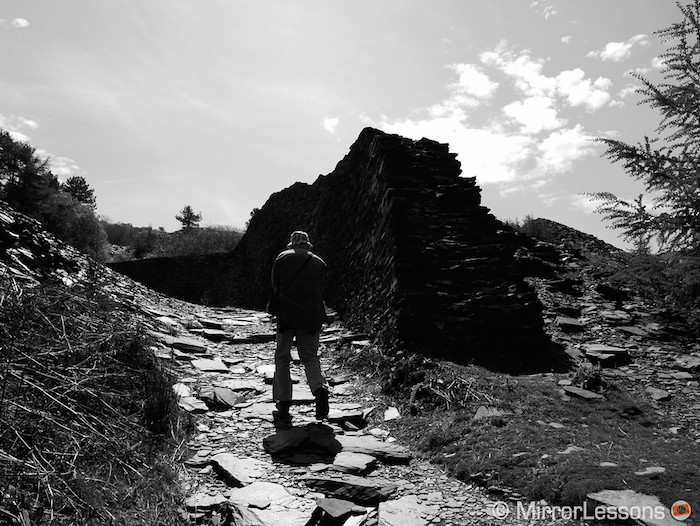
10. Price
The final difference worth noting is, of course, the price. When it was released, the GF7 paired with the 12-32mm f/3.5-5.6 kit lens cost in the region of $600 US but can now be found for much less both brand new and second-hand. Interestingly, the GX850 has been priced below the GF7 at just $550 with the same kit lens but it will likely remain at this price for at least the next few months.
Conclusion
Although we managed to find a number of differences between the Panasonic Lumix GF7 and GX850, there are two in particular that will bear more weight on your final decision than any other: the addition of 4K video and 4K Photo.
Combined with the flip-up touchscreen and various selfie features, the 4K video capabilities make the GX850 a very convenient camera for those who often do casual video blogging on the go, while 4K Photo, in addition to letting you capture momentary action with ease, opens up many new creative avenues with features such as Post Focus, Light Composition and Focus Stacking.
If these two features do not interest you, however, you may be better off saving a couple of hundred dollars by investing in the older Lumix GF7 instead. The image quality is almost identical and since neither camera is intended for action photography (and are indeed too small to be used with the best sports and wildlife lenses), the inclusion of DfD autofocus is less a tangible advantage than the proverbial “cherry on top”.
Check price of Lumix GF7 on
Check price of the Lumix GX850 / GX800 on
Amazon | Amazon UK | B&H Photo | eBay

